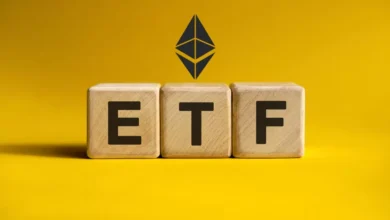Top 3 Stablecoins Compared: A Comprehensive Analysis

Stablecoins have emerged as a crucial bridge between the volatile world of cryptocurrencies and the stability of traditional fiat currencies. These digital assets aim to maintain a fixed value, making them ideal for everyday transactions, hedging against market volatility, and providing liquidity. In this article, we delve into the top three stablecoins, exploring their features, use cases, and market dominance.
Stablecoins are cryptocurrencies designed to minimize price fluctuations by pegging their value to an underlying asset. The most common types of stablecoins include:
1. Fiat-Collateralized Stablecoins:
- Backed by fiat currencies (e.g., US dollars, euros).
- Tether (USDT) is a prime example, maintaining a 1:1 peg to the US dollar.
2. Crypto-Collateralized Stablecoins :
- Backed by other cryptocurrencies (e.g., Ethereum).
- Dai (DAI) is a decentralized crypto-collateralized stablecoin.
3. Algorithmic Stablecoins:
- Not backed by any specific asset.
- Their value is algorithmically adjusted to maintain stability.
- Examples include Ampleforth (AMPL) and Terra (LUNA).
Top 3 Stablecoins: A Comparative Analysis
Tether (USDT)
- Market Capitalization : Tether dominates the stablecoin market with a staggering market cap of $97.91 billion.
- Market Dominance: USDT holds a commanding 71.47% share in the stablecoin space.
- Trading Volume : Tether leads in trading volume, with $31.39 billion in daily transactions.
- Controversies and Transparency: Tether has faced scrutiny regarding its reserves. While it claims to be backed 1:1 by US dollars, concerns persist about its transparency and actual holdings. This controversy sets it apart from other stablecoins.
- Widespread Adoption: Despite controversies, Tether remains the dominant stablecoin in terms of market capitalization and trading volume. Its widespread adoption across exchanges and platforms gives it a unique position.
USD Coin (USDC)
- Market Capitalization : USDC ranks second with a market cap of $28.18 billion.
- Market Dominance : USDC holds 20.57% of the stablecoin market.
- Trading Volume : USDC’s daily trading volume stands at $3.32 billion.
- Regulatory Compliance: USDC stands out for its commitment to regulatory compliance. It is backed by regulated financial institutions, providing users with confidence in its stability.
- Transparency: USDC maintains regular audits and publishes its reserves, enhancing transparency compared to some other stablecoins.
Dai (DAI)
- Market Capitalization : Dai’s market cap is $5.35 billion.
- Market Dominance : Dai accounts for 3.61% of the stablecoin market.
- Trading Volume : Dai’s daily trading volume is $112.94 million.
- Decentralization: Dai’s uniqueness lies in its fully decentralized nature. It is not backed by fiat or controlled by any central authority. Instead, it relies on smart contracts and over-collateralization with Ethereum (ETH).
- Algorithmic Stability: Dai’s algorithmic stability mechanism adjusts its supply based on demand, maintaining its peg to the US dollar. This innovative approach sets it apart.
Emerging Trends in Stablecoin Development
- Algorithmic Stablecoins:
- Rise of algorithmic stablecoins maintaining their peg through algorithmic mechanisms.
- Increased flexibility and scalability, potentially reducing reliance on centralized assets.
2. Cross-Chain Interoperability:
- Stablecoins seamlessly move between different blockchain networks.
- Enhanced utility and accessibility, fostering greater adoption and liquidity.
3. Regulatory Compliance:
- Top priority, leading to compliant stablecoin development adhering to standards.
- Enhanced transparency and trust.
4. New Use Cases Beyond Value Transfer:
- Exploring DeFi applications, tokenized assets, and governance mechanisms.
- Dynamic and maturing stablecoin market playing a crucial role in the broader financial landscape.
As the stablecoin landscape evolves, these digital anchors continue to shape the crypto world, providing stability and convenience for traders, investors, and everyday users alike
Conclusion
Stablecoins play a vital role in the crypto ecosystem, providing stability, liquidity, and versatility. While Tether remains dominant, USDC and Dai offer unique features and regulatory compliance. As the crypto landscape evolves, stablecoins will continue to shape the future of digital finance.
Frequently Asked Questions
Is Tether fully backed by US dollars? Tether claims to be backed 1:1 by US dollars, but its transparency and reserves have been a subject of debate.
Is USDC regulated? USDC is known for its regulatory compliance and transparency, making it a trusted stablecoin.
How does Dai maintain its peg? Dai is over-collateralized with Ethereum (ETH) and uses smart contracts to stabilize its value.





